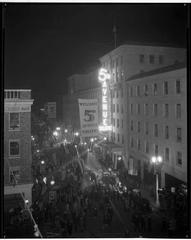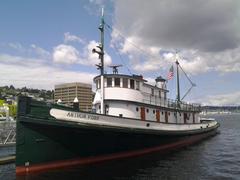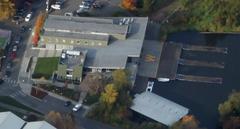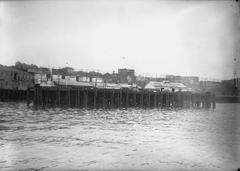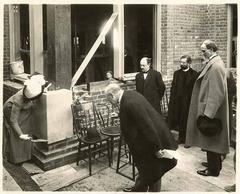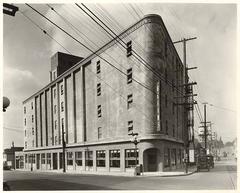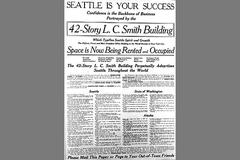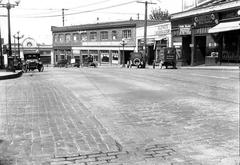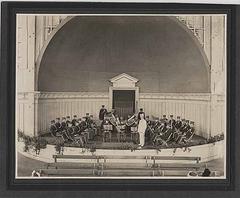
Harvard Exit Theatre Seattle: Visiting Hours, Tickets, and Historical Significance
Date: 04/07/2025
Introduction
Nestled in Seattle’s thriving Capitol Hill neighborhood, the Harvard Exit Theatre is an enduring emblem of the city’s architectural, cultural, and cinematic heritage. Originally constructed in 1925 as the Woman’s Century Club clubhouse—a hub for civic engagement and women’s rights—the building later transitioned into one of Seattle’s most cherished independent cinemas. Today, though no longer functioning as a movie theatre, the Harvard Exit stands as a preserved historical landmark, hosting community events and serving as an office space while maintaining its architectural grandeur and storied past.
This comprehensive guide details the Harvard Exit Theatre’s history, its cultural importance, visiting hours, ticketing information, accessibility, and nearby attractions. Whether you’re a history buff, film lover, or traveler exploring Seattle’s historical sites, this article will help you plan a memorable visit to this Capitol Hill gem. For the most current updates and event schedules, always refer to official sources such as the Landmark Theatres website, SIFF’s Harvard Exit page, and community heritage organizations. (Seattle Times, Cinema Treasures, Atlas Obscura)
Table of Contents
- Introduction
- Historical Overview
- Architecture and Design
- Cultural Significance
- Visiting Information
- Unique Aspects: Ghost Legends
- Visitor Tips
- Frequently Asked Questions (FAQ)
- Conclusion
- References
- Visuals
Historical Overview
Origins and Early Years (1925–1968)
The Harvard Exit Theatre’s story begins with its construction in 1925 as the Woman’s Century Club clubhouse. Founded in 1891, the club was instrumental in advancing women’s rights and civic participation in Seattle. The building’s Colonial Revival design—with its stately brick façade, elegant woodwork, and vintage chandeliers—reflected the club’s progressive ideals and focus on intellectual exchange. To this day, the Woman’s Century Club maintains a presence, meeting monthly and preserving the building’s original mission.
Transformation into a Cinema (1968–1979)
In 1968, the Woman’s Century Club sold the property, stipulating that the distinctive lobby remain unaltered. Film enthusiasts Art Bernstein and Jim O’Steen transformed the building into the Harvard Exit Theatre, Seattle’s first “twin cinema,” which specialized in independent, foreign, and arthouse films. The theatre quickly became a cornerstone of Seattle’s burgeoning film culture, renowned for its plush interiors and sophisticated ambiance.
Landmark Theatres Era and Cultural Impact (1979–2015)
The theatre was acquired by Landmark Theatres in 1979, further cementing its reputation as a hub for eclectic programming and community engagement. During this period, the Harvard Exit hosted film festivals, premieres, and notable events, including the first Seattle Lesbian and Gay Film Festival in 1996. The venue’s old-world charm and inclusive programming attracted cinephiles and locals alike, while ghostly tales—like that of a spectral woman in 1920s dress—added to its mystique. (Seattle Times)
Closure and Adaptive Reuse (2015–Present)
After nearly five decades as a cinema, the Harvard Exit Theatre ceased film operations in 2015. The building underwent sensitive adaptive reuse, now housing offices (including the Consulate of Mexico) and hosting special events while preserving its historic features. Its reputation for ghostly sightings endures, making it a highlight on local ghost tours. The Woman’s Century Club continues to meet on site, ensuring the building’s original spirit remains alive.
Architecture and Design
The Harvard Exit Theatre is an exemplar of early 20th-century civic architecture, featuring Colonial Revival elements such as symmetrical brickwork, classical detailing, and spacious, light-filled interiors. The preserved lobby, with its grand staircase, vintage chandeliers, and original woodwork, offers a rare glimpse into Seattle’s past. Adaptive reuse has maintained these architectural treasures while accommodating modern needs. (Atlas Obscura)
Cultural Significance
From its origins as a center for women’s activism to its decades as a beloved cinema, the Harvard Exit Theatre has played a vital role in Seattle’s cultural evolution. It was a major venue for the Seattle International Film Festival (SIFF), hosted the city’s first LGBTQ+ film festival, and served as a gathering place for dialogue and artistic expression. Its ongoing community use and preservation underscore its status as a living landmark.
Visiting Information
Visiting Hours and Access
The Harvard Exit Theatre is not currently a full-time cinema, but the building remains publicly accessible during business hours due to its office tenants and community events. The Woman’s Century Club hosts monthly meetings; tours may be available through local heritage organizations or as part of Capitol Hill walking tours. Always check with the SIFF Harvard Exit page or building tenants for current visiting opportunities.
Tickets and Guided Tours
Tickets are not required for general access, but special events, heritage tours, or ghost tours that include the Harvard Exit may require advance reservations or fees. Local tour companies and historical societies occasionally feature the theatre as a stop.
Accessibility
Modern upgrades have improved accessibility, with wheelchair access and accessible restrooms available. For specific needs, contact event organizers or tenants in advance.
Location and Transportation
Located at 807 E Roy St, the Harvard Exit Theatre is easily reached via King County Metro bus routes, and is a short walk from the Capitol Hill Light Rail Station. Limited street parking is available; public transit or rideshare services are recommended.
Nearby Attractions
Capitol Hill boasts a vibrant arts scene—Volunteer Park, the Seattle Asian Art Museum, and the lively Pike/Pine corridor are all nearby. The neighborhood also offers diverse dining and shopping options for a complete cultural outing.
Unique Aspects: Ghost Legends
The Harvard Exit Theatre is steeped in local lore. Reports of a ghostly woman in 1920s attire have circulated for decades, contributing to its reputation as one of Seattle’s most haunted historic sites. These stories are often featured on walking and ghost tours, adding a layer of intrigue to any visit. (Seattle Times)
Visitor Tips
- Plan Ahead: Check the Landmark Theatres website or SIFF Harvard Exit page for current events and visiting hours.
- Arrive Early: For events or tours, early arrival ensures the best experience and a chance to admire the architecture.
- Combine Visits: Explore nearby Capitol Hill attractions for a full day of culture.
- Accessibility: Contact ahead for special accommodations.
- Photography: Allowed in public spaces but prohibited during performances or private meetings.
- Weather: Seattle weather can be unpredictable; dress in layers and bring an umbrella if needed. (Lonely Planet)
Frequently Asked Questions (FAQ)
Q: Is the Harvard Exit Theatre still a movie theatre?
A: No, regular film screenings ended in 2015. The building now hosts offices and special events, but retains its historic ambiance.
Q: Can I visit the building?
A: Yes, during business hours or by attending public events and tours. Check with tenants or tour providers for access details.
Q: Are there guided tours?
A: Local heritage and ghost tour operators sometimes include the Harvard Exit on their Capitol Hill routes.
Q: Is the building accessible?
A: Yes, accessibility improvements have been made, but always confirm with event organizers.
Q: What are the best nearby attractions?
A: Volunteer Park, Seattle Asian Art Museum, and Capitol Hill’s diverse shops and eateries.
Conclusion
The Harvard Exit Theatre remains a vital part of Seattle’s historical and cultural landscape. Its elegant architecture, rich legacy of activism and cinema, and enduring community presence make it a must-see destination for visitors and locals alike. While its era as a cinema has ended, its story continues—inviting exploration and appreciation of Seattle’s dynamic past and present. For up-to-date information, events, and tours, consult the Landmark Theatres website, SIFF Harvard Exit page, and related community resources. (Seattle Times, Cinema Treasures, Atlas Obscura)
For deeper insights into Seattle’s history and cultural offerings, download the Audiala mobile app and follow local organizations on social media.
References
- Harvard Exit Theatre - Wikipedia
- The Harvard Exit Movie Theater (Capitol Hill) - Seattle Fandom
- Harvard Exit Memories - Seattle Times
- Harvard Exit Theatre - Cinema Treasures
- Harvard Exit Theatre - Atlas Obscura
- SIFF Harvard Exit Official Page
- Best Time to Visit Seattle - Travellers Worldwide
- Best Time to Visit Seattle - Lonely Planet
Visuals
- Exterior photo of Harvard Exit Theatre, with the original “Woman’s Century Club” inscription (alt: “Harvard Exit Theatre brick façade Capitol Hill Seattle”)
- Interior image of the historic lobby with grand staircase and vintage chandeliers (alt: “Harvard Exit Theatre preserved lobby and staircase”)
- Map showing Harvard Exit Theatre’s location in Capitol Hill (alt: “Harvard Exit Theatre Capitol Hill Seattle map”)
- Photograph of Capitol Hill streetscape near the theatre (alt: “Capitol Hill neighborhood near Harvard Exit Theatre”)


